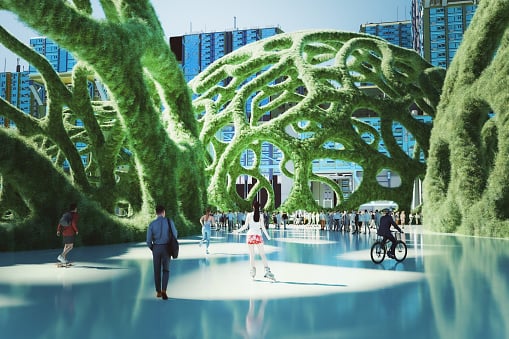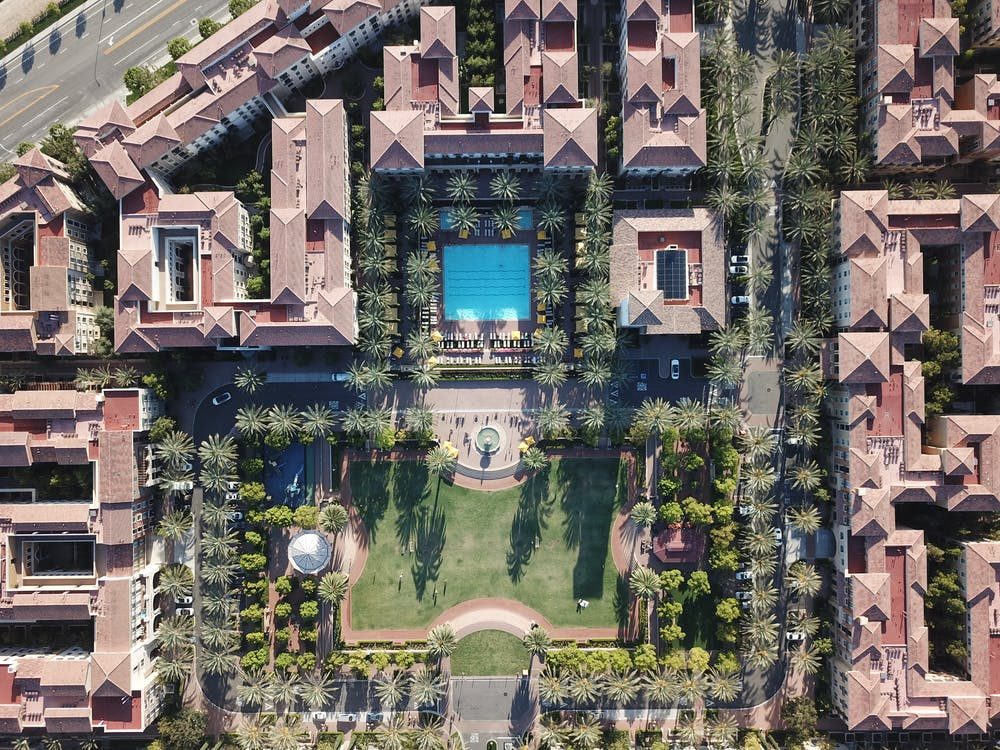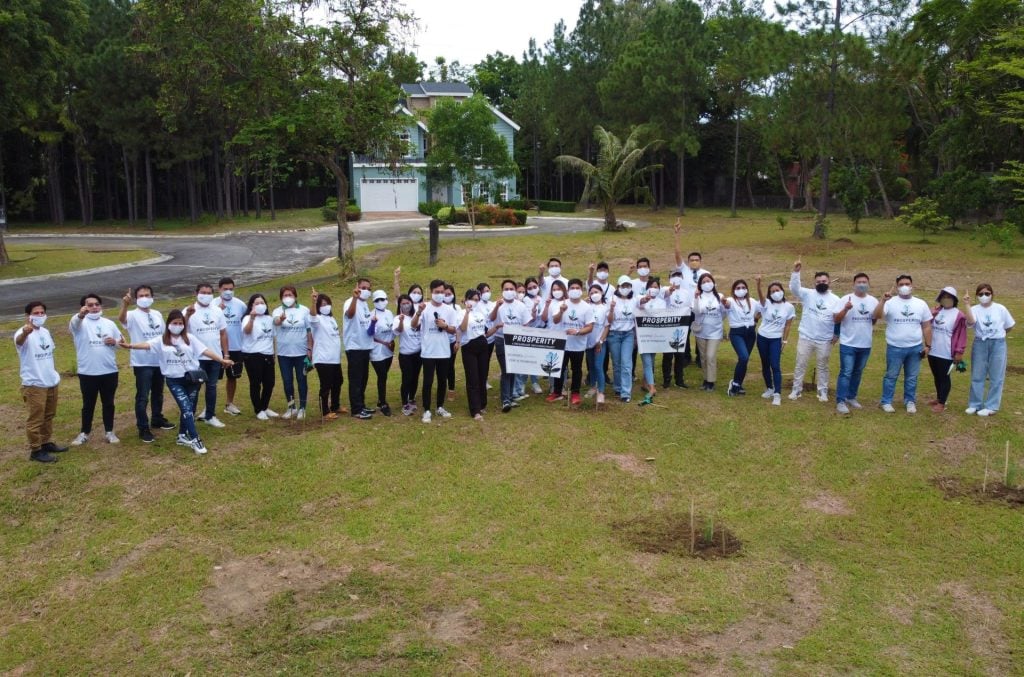BLOGS
Proposed Sustainable Cities and Communities Act Aims to Build More Eco-Friendly Cities in PH
A sustainable city and community are interrelated concepts that focus on creating environmentally, socially, and economically sustainable urban environments. A sustainable city, also known as an eco-city or green city, is a city that is designed, developed, and managed in a way that promotes sustainable development principles. It aims to meet the needs of its current population while ensuring the well-being of future generations. While a sustainable community refers to a group of individuals living together in a way that prioritizes sustainability principles. It encompasses a smaller-scale setting, such as a neighborhood or town, and emphasizes community engagement, shared values, and collaborative efforts towards sustainability.
Both sustainable cities and communities share the goal of creating environments that balance environmental protection, social equity, and economic viability. They recognize the interconnectedness of human activities, natural systems, and well-being, and work towards a future that meets the needs of the present generation while preserving resources for future generations.
The Senate Bill No. 65 or known as the Act Providing for the Development of Sustainable Cities and Communities in the Country, and for Other Purposes, aims to create a legal framework in promoting the incorporation of sustainability in cities and communities by providing support through authorizing Local Government Units (LGUs) to enter into contracts relative to accomplishing sustainability.
The idea, according to Speaker Martin Romualdez, intends to develop communities that may offer adequate living circumstances to Filipinos, particularly the poor, providing pleasant housing and recreational facilities, essential services, and employment avenues.

What are the sustainable cities in the Philippines?
The Philippines has been making efforts to promote sustainable development and create sustainable cities. Here are a few examples of cities who are ahead and align with the Sustainable Cities and Communities Act in the Philippines:
-
Clark Green City
Located in Central Luzon, Clark Green City is a planned sustainable city designed to be a model of environmental stewardship and economic growth. It aims to become a low-carbon, disaster-resilient, and resource-efficient city, incorporating green infrastructure, renewable energy, and efficient transportation systems.
-
Bonifacio Global City (BGC)
Situated in Metro Manila, BGC is a prime example of a sustainable urban development project. It features pedestrian-friendly streets, dedicated bicycle lanes, and an efficient public transportation system. BGC has green spaces, such as parks and rooftop gardens, and promotes energy-efficient buildings.
-
Iloilo City
Iloilo City has made significant strides in sustainable urban development. It focuses on heritage preservation, sustainable transportation, and promoting a clean and green environment. The city has implemented bike lanes, pedestrian-friendly zones, and initiatives for waste management and recycling.
-
Puerto Princesa City
Located in Palawan, Puerto Princesa City is known for its commitment to sustainable tourism and environmental conservation. It has strict regulations to protect its natural resources, including the Subterranean River National Park, a UNESCO World Heritage Site. The city promotes sustainable tourism practices and has initiatives for waste management and conservation.
-
Mandaluyong City
Mandaluyong City in Metro Manila has taken steps towards sustainability by implementing programs for waste management, tree planting, and environmental awareness. It also encourages the use of bicycles as an alternative mode of transportation and promotes energy efficiency in buildings.
-
Cagayan de Oro City
Cagayan de Oro City has initiatives focused on sustainable transportation, waste management, and disaster resilience. It has implemented a bike-sharing system and promotes waste segregation and recycling programs.
These are just a few examples, and there are other cities and initiatives in the Philippines that are striving to become more sustainable. With the help of the Sustainable Cities and Communities Act, the government, local communities, and private sectors will be working together to promote sustainable urban development and create cities that are environmentally friendly, socially inclusive, and economically viable.

How can we achieve and help with the Sustainable Cities and Communities Act?
Achieving a sustainable community involves the collective effort of individuals, communities, businesses, and government entities. Here are some key steps and strategies that can help in building a sustainable community:
-
Raise Awareness and Foster Education
Promote awareness and education about sustainability principles and practices within the community. Conduct workshops, seminars, and campaigns to educate residents about energy conservation, waste management, sustainable transportation, and other relevant topics.
-
Community Engagement and Collaboration
Encourage active participation and collaboration among community members, local organizations, businesses, and government agencies. Establish platforms for dialogue and decision-making processes that involve all stakeholders in shaping sustainable initiatives and projects.
-
Sustainable Urban Planning and Design
Develop urban planning strategies that prioritize compact and connected neighborhoods, mixed land-use development, and access to amenities. Consider green spaces, parks, and walkability when designing community spaces. Incorporate sustainable building practices and encourage energy-efficient designs.
-
Energy Efficiency and Renewable Energy
Promote energy-efficient practices within homes, businesses, and public facilities. Encourage the use of energy-efficient appliances, LED lighting, and smart energy management systems. Support the adoption of renewable energy sources such as solar or wind power through incentives and policies.
-
Sustainable Transportation
Develop a comprehensive transportation plan that prioritizes sustainable modes of transportation. Invest in public transit infrastructure, create pedestrian-friendly and cycling-friendly environments, and support carpooling and ridesharing initiatives. Promote the use of electric vehicles and develop charging infrastructure.
-
Waste Management and Recycling
Implement waste management systems that include recycling programs, composting, and proper disposal practices. Educate residents about waste reduction, reuse, and recycling techniques. Encourage businesses and industries to adopt sustainable waste management practices.
-
Water Conservation
Promote water conservation practices within the community. Implement water-efficient technologies, encourage rainwater harvesting, and raise awareness about the responsible use of water resources. Support initiatives for water conservation and protection of local water bodies.
-
Local Food Systems
Promote local and sustainable food production by supporting community gardens, farmers’ markets, and urban agriculture. Encourage organic farming practices and reduce reliance on long-distance food transportation, thus minimizing the carbon footprint associated with food consumption.
-
Social Equity and Inclusion
Ensure social equity and inclusion within the community. Promote affordable housing, access to quality education, healthcare, and employment opportunities for all residents. Encourage social cohesion, diversity, and equal participation in decision-making processes.
-
Monitoring and Evaluation
Regularly monitor and evaluate the progress of sustainable initiatives within the community. Assess the impact of implemented strategies, identify areas for improvement, and adjust policies and practices accordingly.
Taking a step, no matter big or small, has a big contribution in helping with the Sustainable Cities and Communities Act. Building a sustainable community requires long-term commitment, collaboration, and continuous improvement. By focusing on these strategies and involving all stakeholders, communities can work towards creating a more environmentally, socially, and economically sustainable future.

Brittany: Step Forward the Sustainable Cities and Communities Act
Each new construction displays a certain level of harmony within its neighborhoods, preserving the natural surroundings through waste disposal systems, materials recovery facilities, and a highly-trained horticultural team that ensures the wellbeing of the entire area, from the environment to the people. In line with the Sustainable Cities and Communities Act, we are taking a step forward the advocacy.
As an investor or end user, you can expect nothing less at Brittany than the highest levels of quality, elegance, and luxury without worrying about the state of the market. Brittany’s approach to creating communities in different regions is classical yet contemporary, aesthetically pleasing yet also efficient, and it gives everyone a taste of what it’s like to live outside of our usual tastes when it comes to determining what home actually feels like. Brittany communities guarantee a strong investment outlook with respect to land appreciation, customer service, and overall market worth.
Suggested Read: Rise Of Eco-Friendly Resorts And Sustainable Tourism
Suggested Read: sustainable Living Tips For An Eco-Friendly Home
Suggested Read: 10 Eco-Friendly Lifestyle Tips To Practice
Suggested Read: Sustainability In The Real Estate Industry















